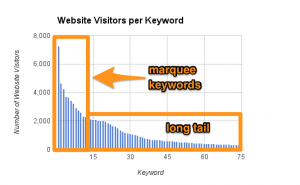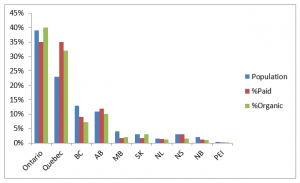 Depending on whom you talk to, some marketers will tell you that pay-per-click (PPC) advertising and inbound marketing are opposites. However, PPC is actually a subsidiary of inbound.
Depending on whom you talk to, some marketers will tell you that pay-per-click (PPC) advertising and inbound marketing are opposites. However, PPC is actually a subsidiary of inbound.
Even though PPC can be considered slightly interruptive, it’s still permission based. And the reason it’s considered a subset of inbound is because it involves matching keywords with audiences already looking for those specific keywords.
PPC is an important part of inbound marketing. If you’re not taking advantage of PPC in your inbound strategy, then you’re not using all of the available channels at your disposal. Inbound marketing is about nurturing the customer through the journey to purchase, and PPC is a strategic element of that journey.
Inbound Marketing
Inbound marketing is the most effective marketing method for online business. It’s a long-term lead generation strategy and works by incorporating quality and useful content to draw the attention of customers. This content includes blogs, podcasts, videos, newsletters, SEO, and social media marketing.
With these content techniques, customers become aware of your business, and eventually those potential customers become paying customers. They view your business as less of a business and more of a valuable resource and advisor to help solve their problems. After all, 61% of global internet users research products online.
The most popular inbound marketing practice combines blogs with SEO techniques. Search engines view well-written blogs as authoritative and give them high search rankings. So it’s easy to see why web developers devote time to blogging.
PPC
With the advent of Google’s search engine, PPC was created. Its platform, AdWords, allows businesses both large and small to advertise and purchase ad space alongside and underneath search results pages. Forty-five percent of online shoppers begin their search by using a search engine.
You set a budget, an ad schedule, and a bidding type and only pay when someone clicks on your ad. You determine which keywords to target and, once your ad is clicked, you funnel your customer to a specific landing page where they sign up for a newsletter, make a purchase, place a call, etc.
However, PPC also has its downfalls, as it’s not a set-it-then-forget-it strategy. To maximize your return on investment, PPC campaigns require you to constantly test and optimize. Optimization includes targeting the correct locations, setting the correct keyword match types and keyword bids, and testing different ad types. The best PPC campaigns are a result of continual testing and comparing.
Which One to Choose: PPC or Inbound?
A well-rounded marketing strategy will utilize the advantages that both assets provide. PPC should be the initial push for your marketing strategy, while inbound marketing will keep your strategy moving. A thorough PPC plan will jump-start your marketing strategy.
Combine your PPC with a well-executed inbound marketing strategy, which includes blog posts and other forms of content distributed to your customers, and you’ll build a convincing relationship with search engines and your customers.
Digital & Social Articles on Business 2 Community
(48)
Report Post








